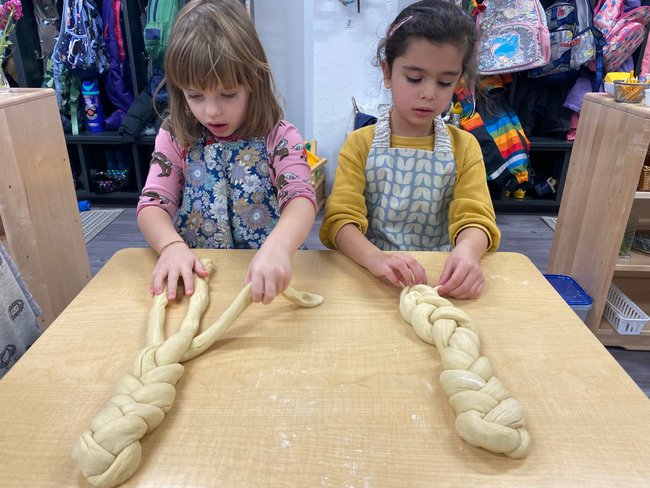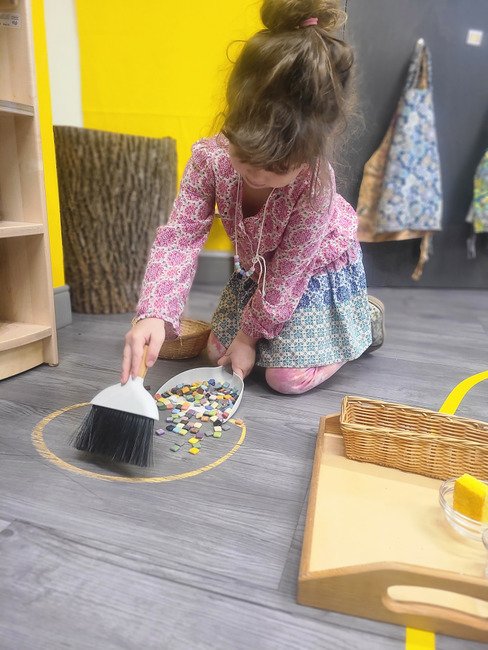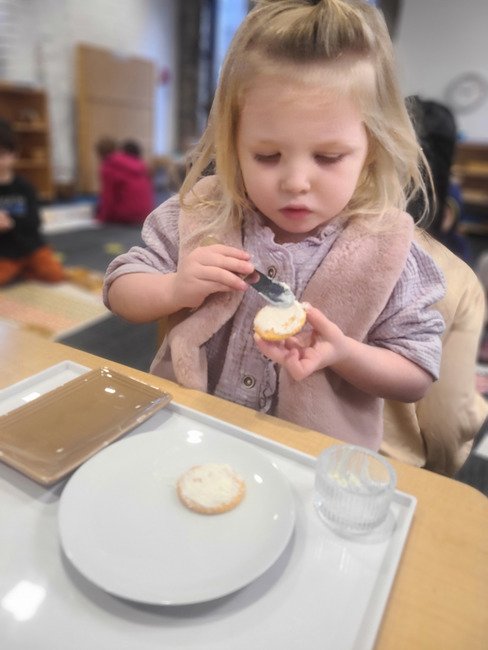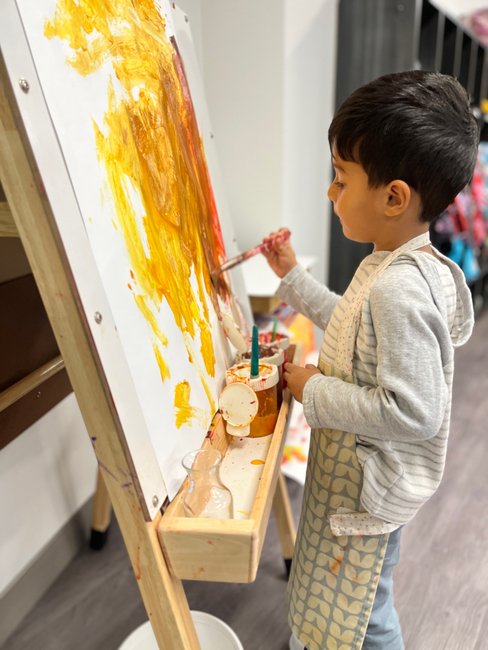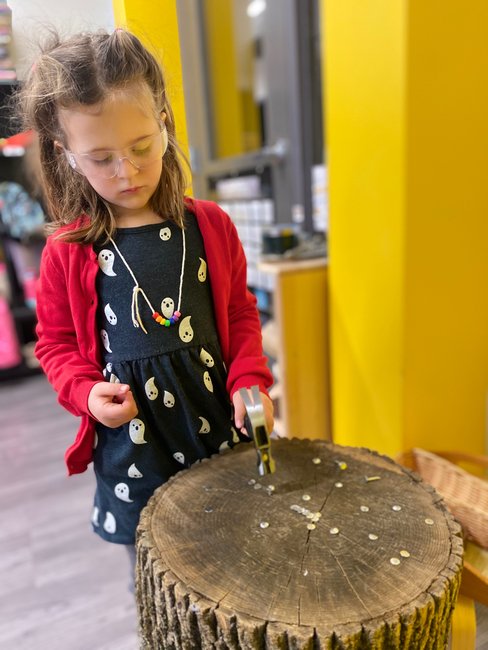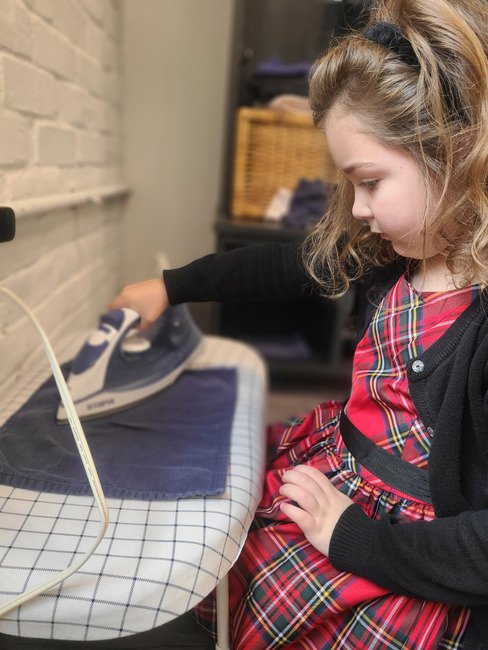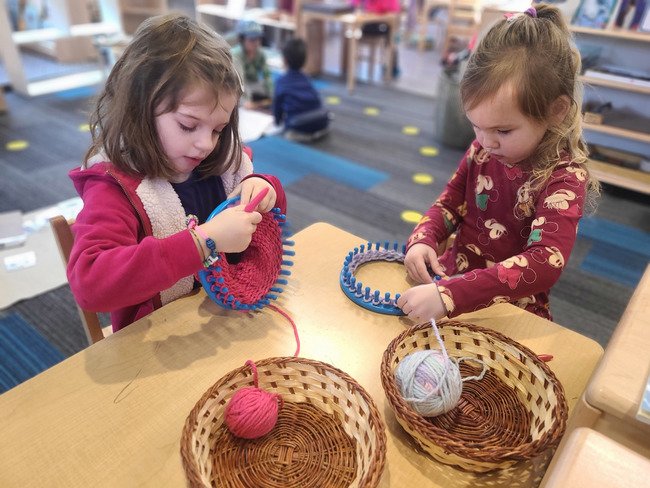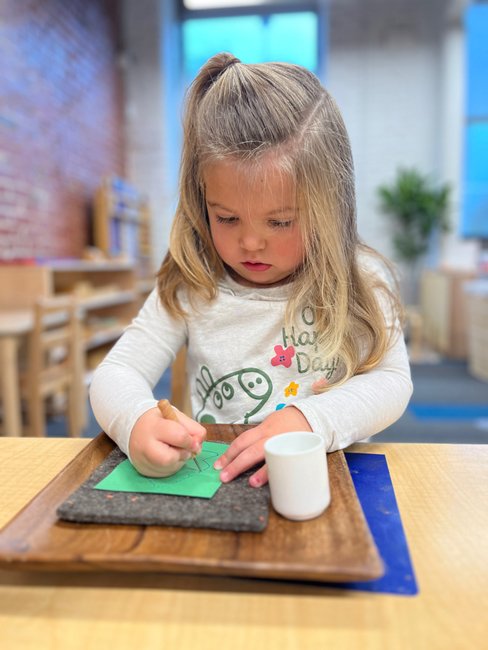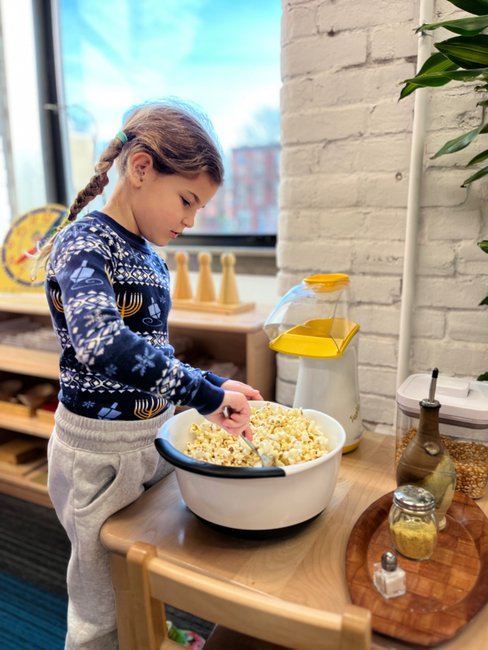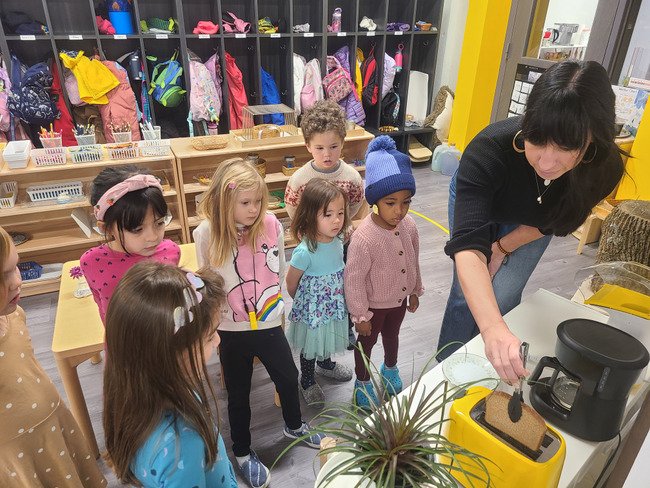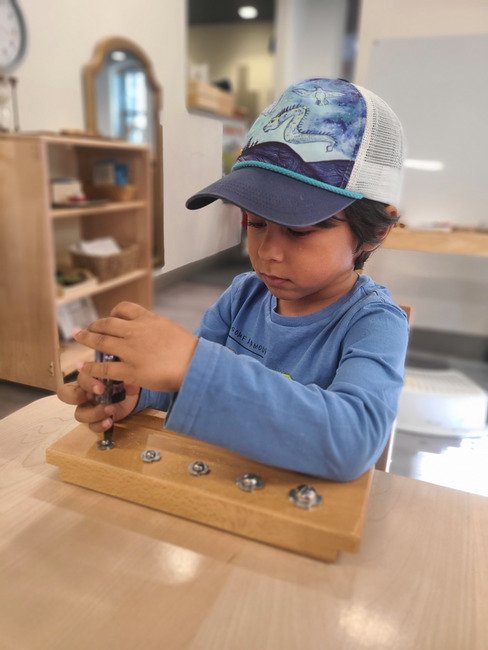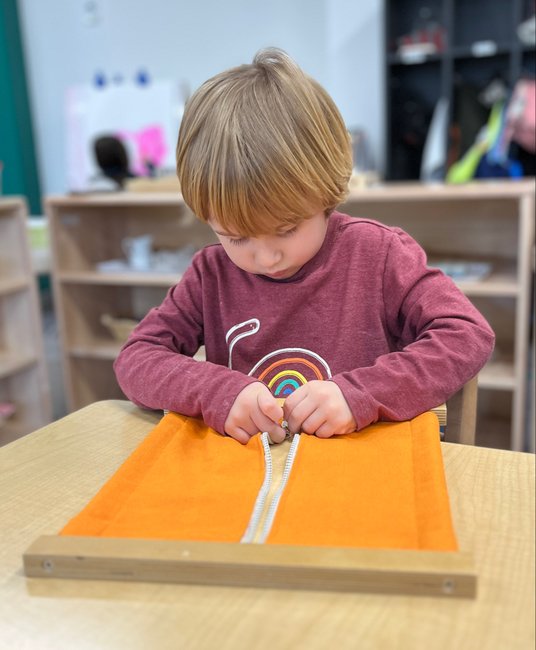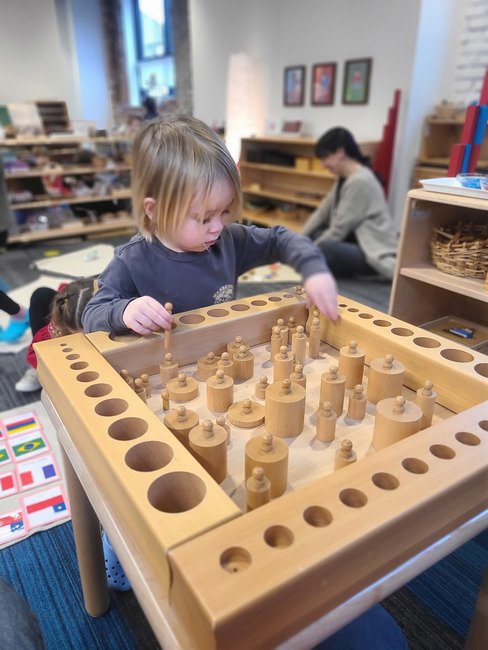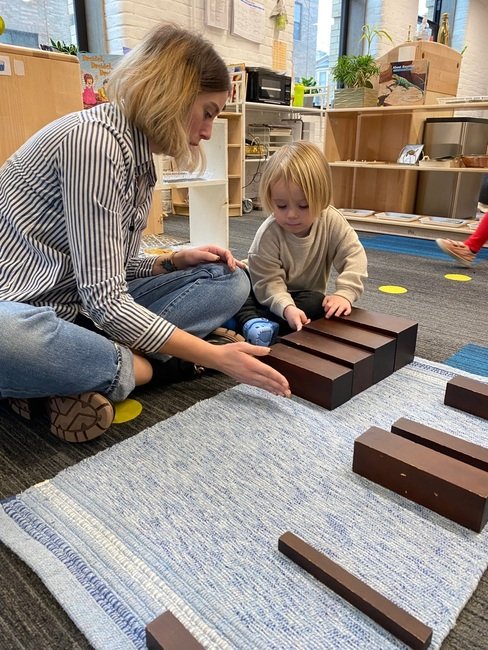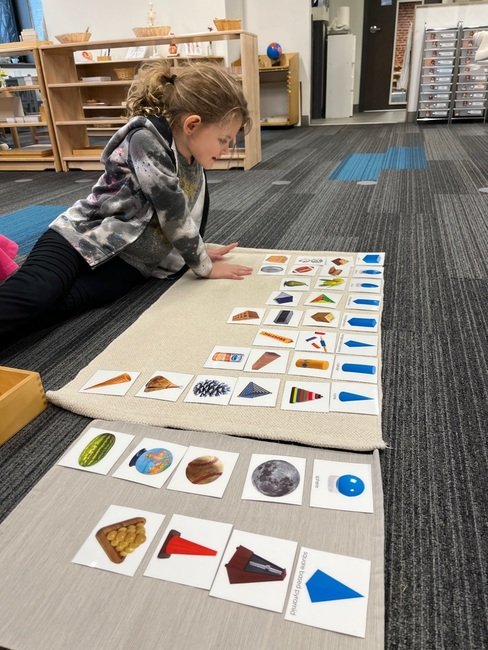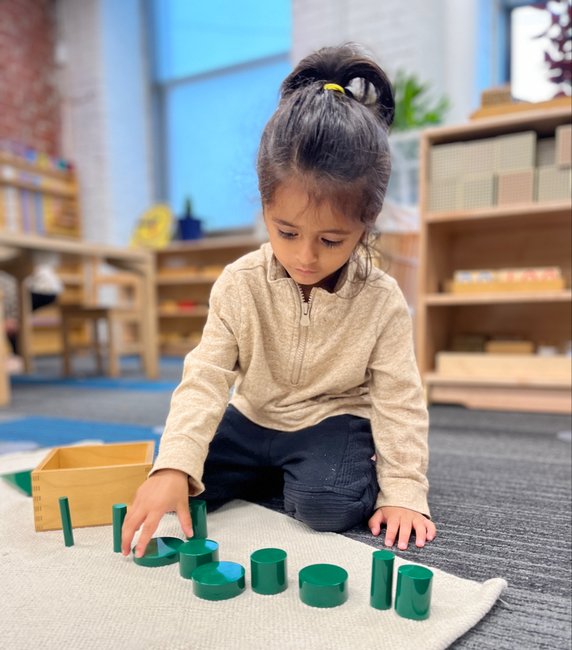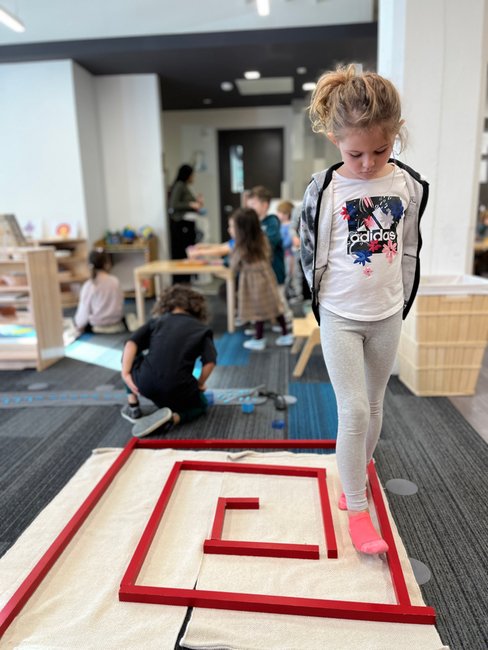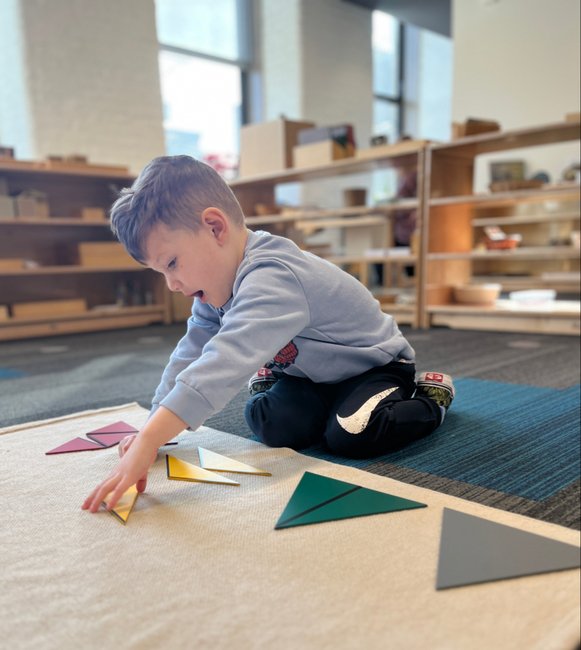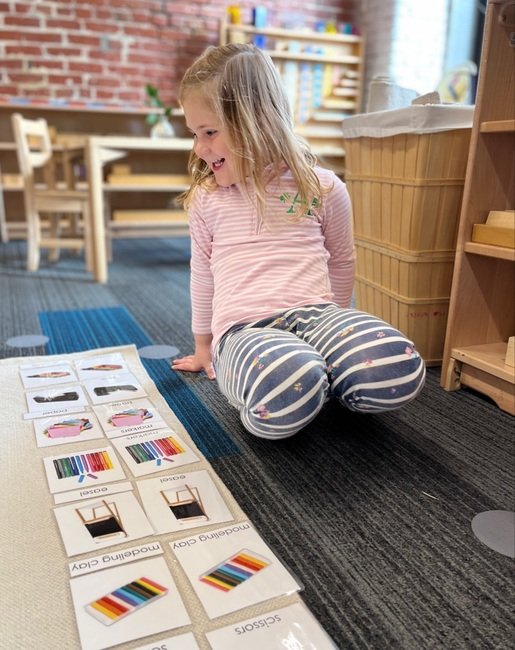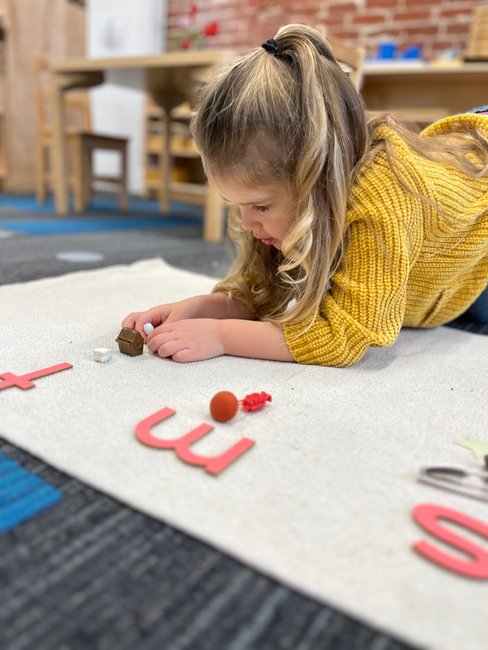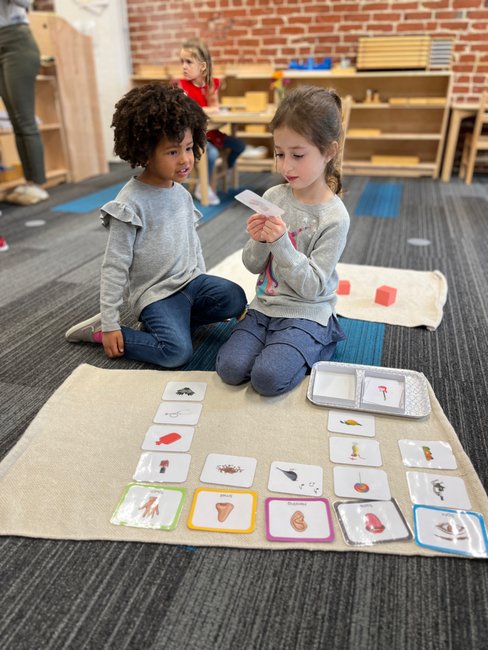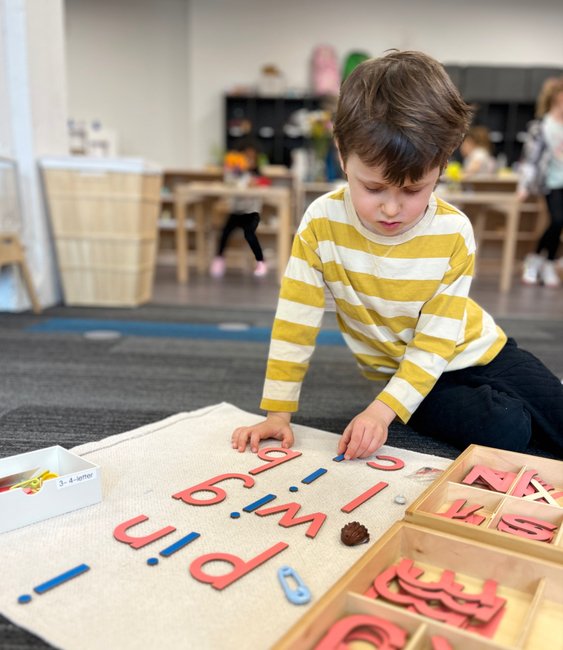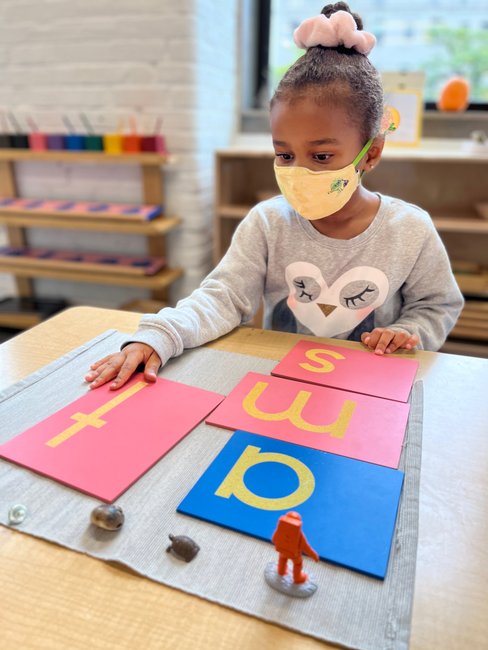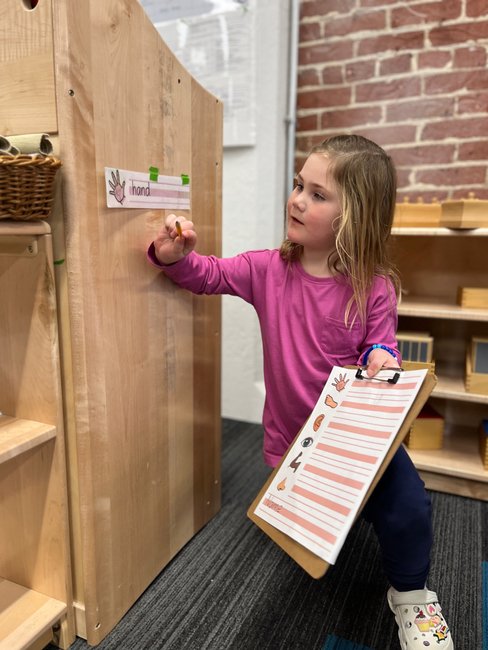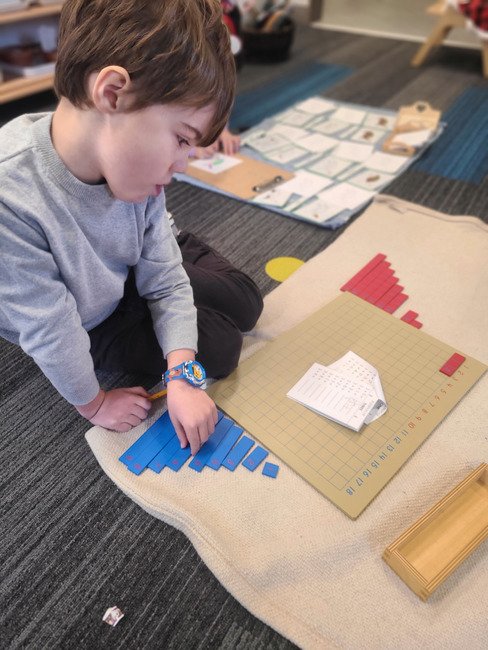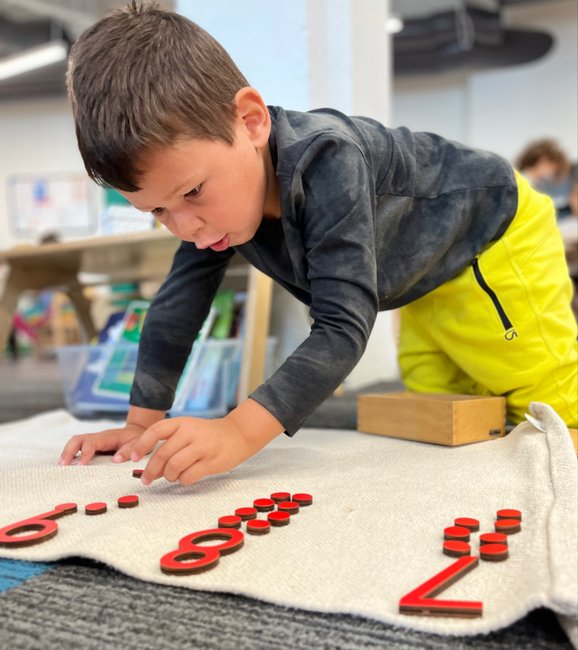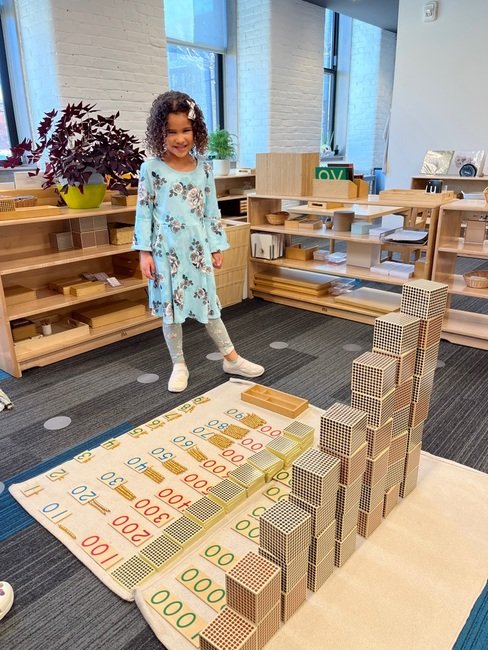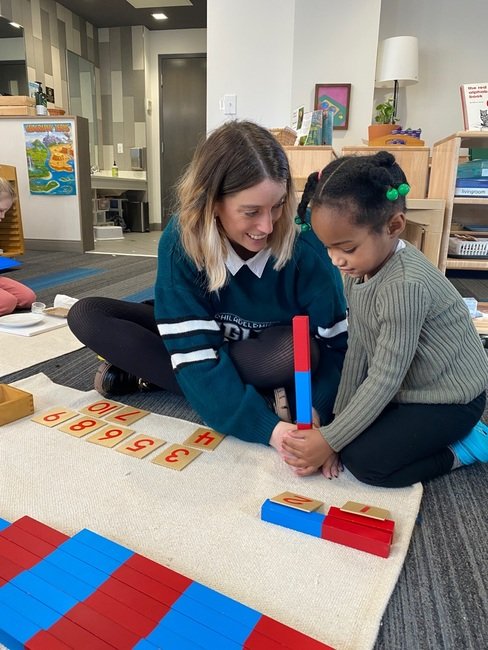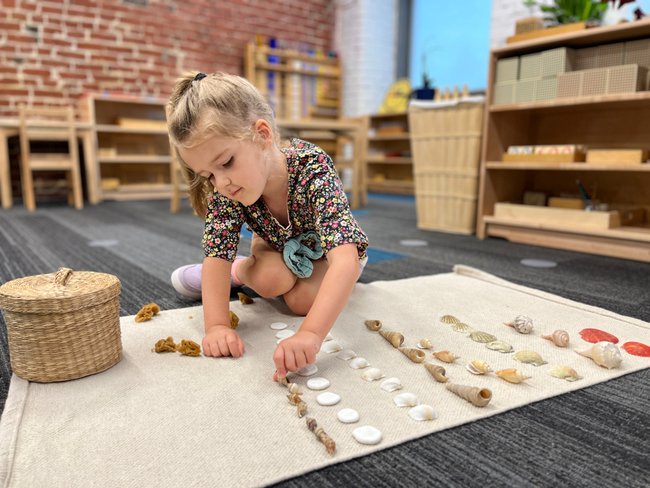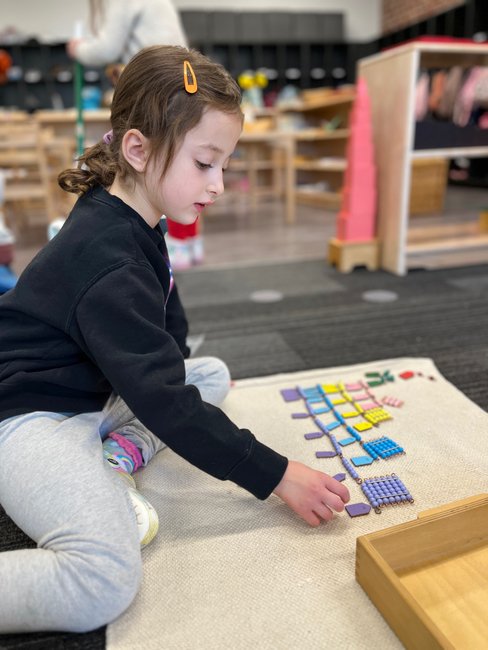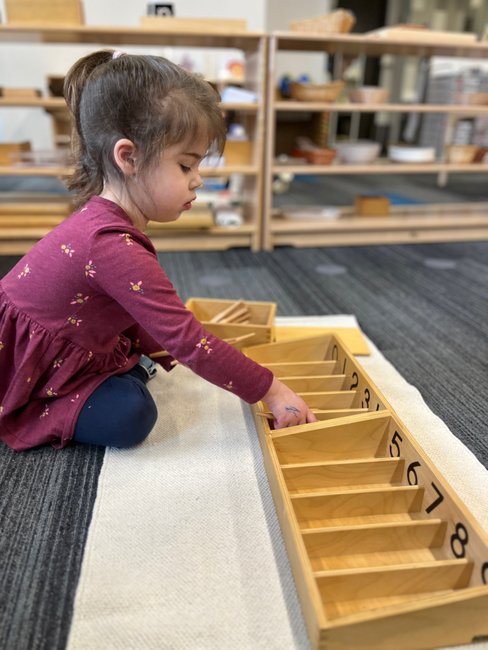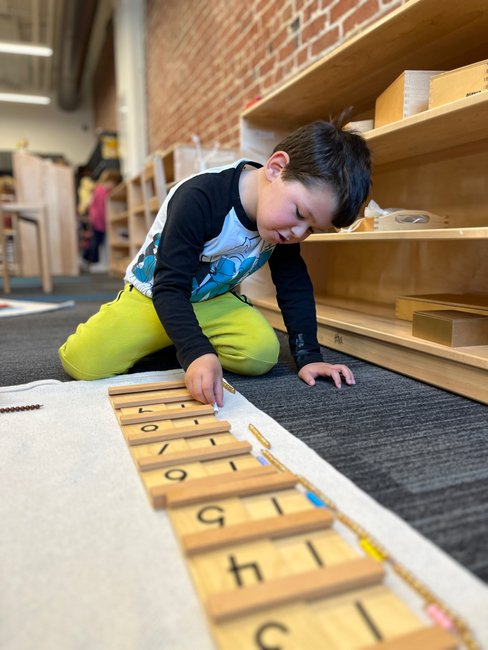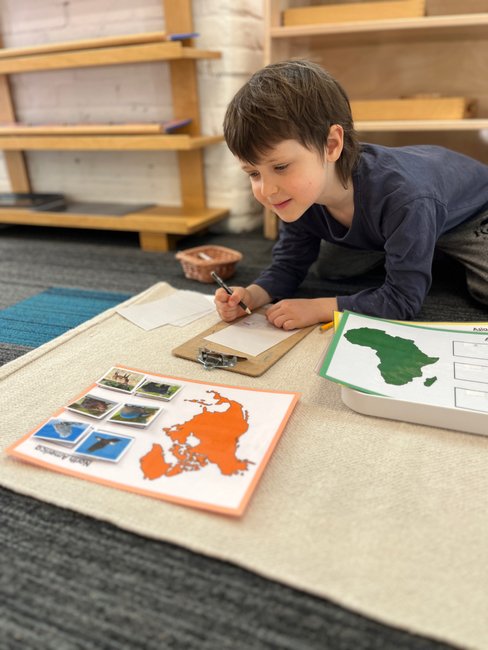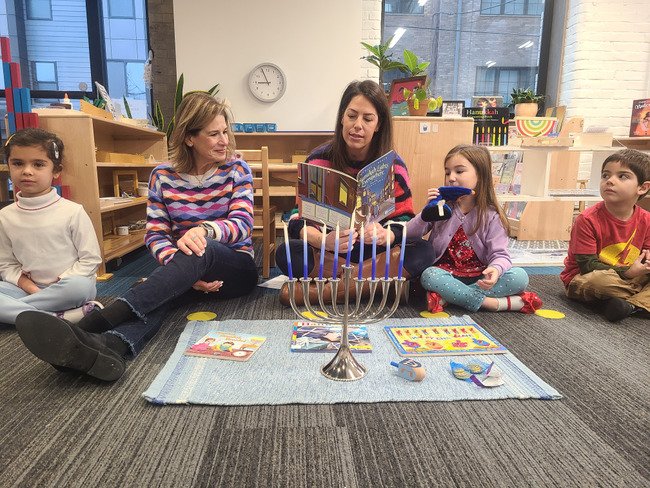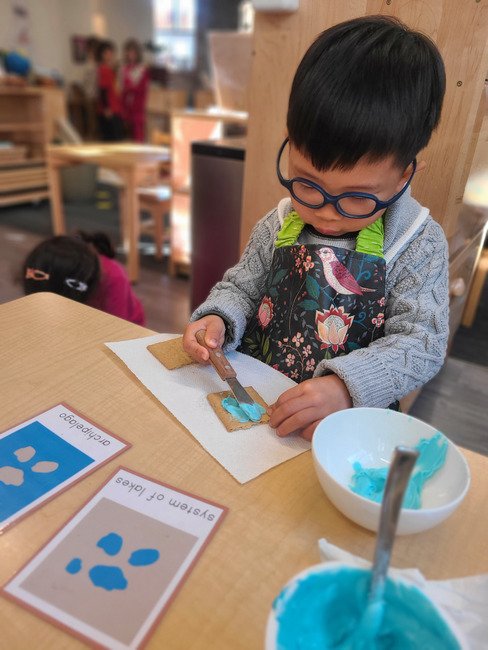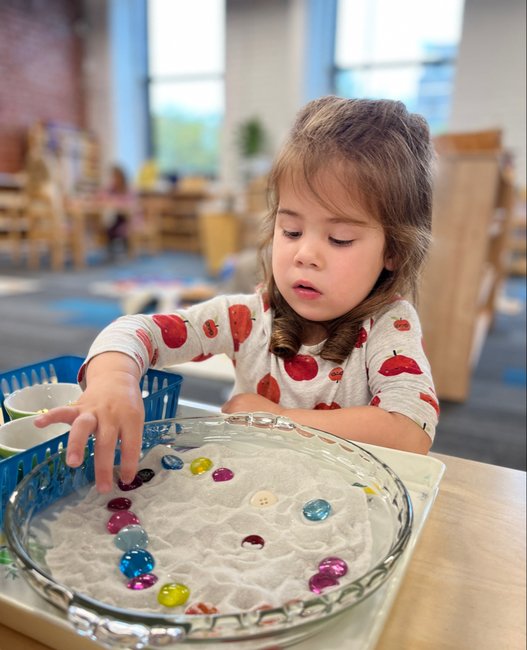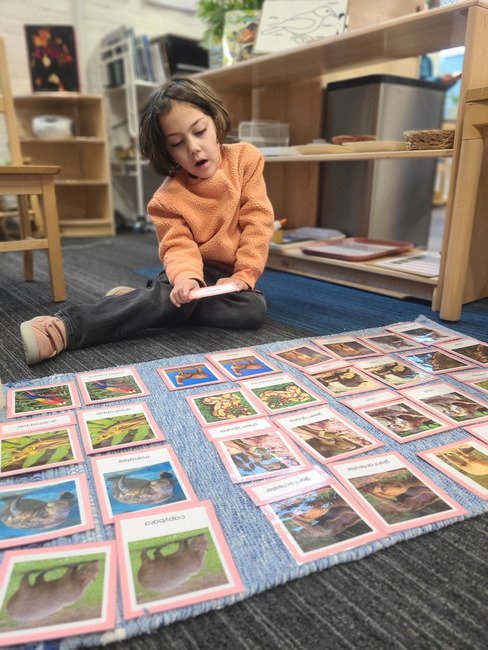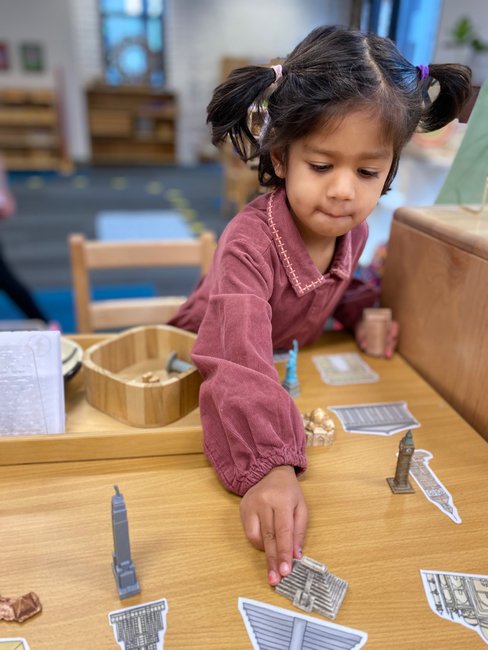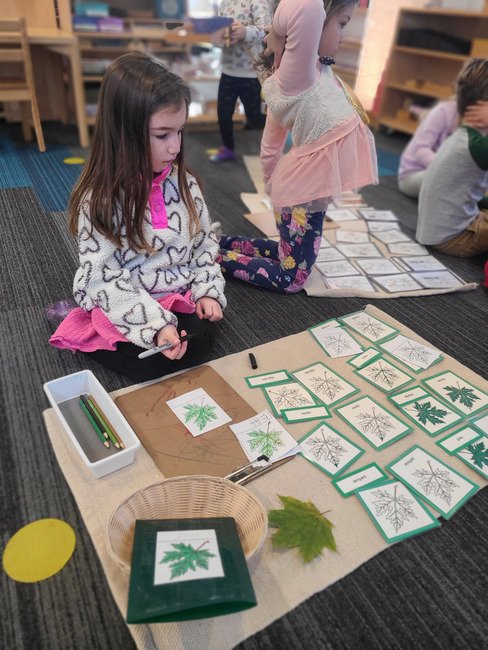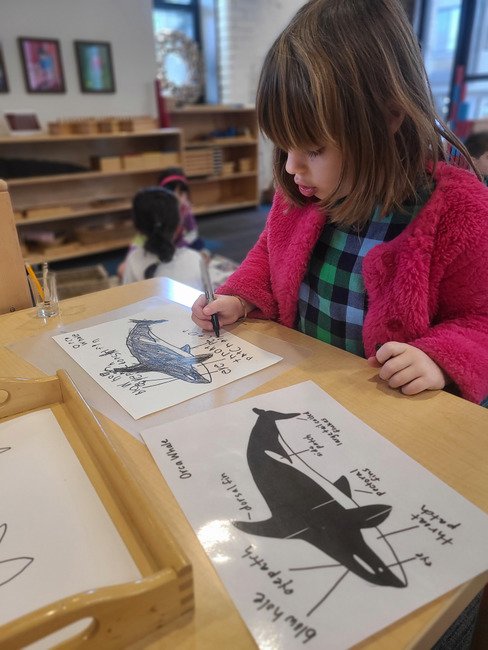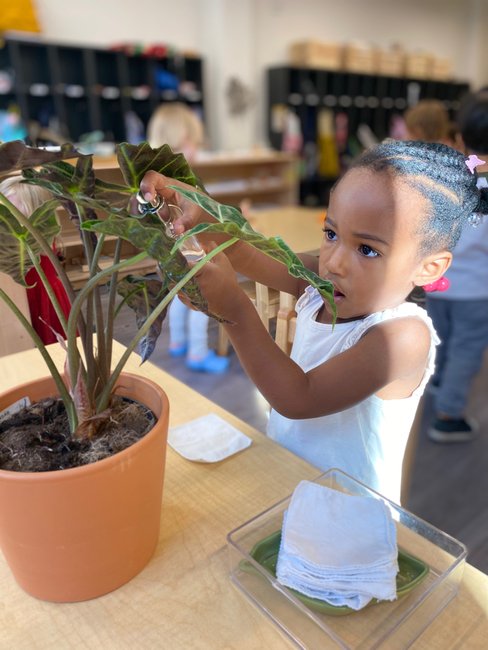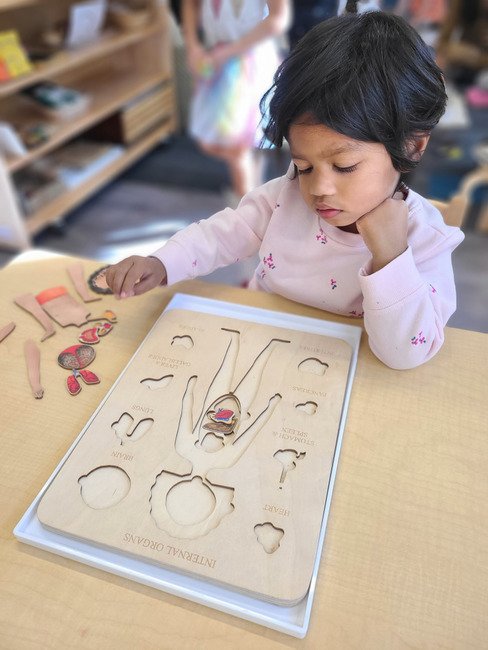About Montessori
Curriculum
Practical Life
Children learn daily-life skills, such as how to get dressed, prepare snacks, set the table and care for plants and animals. They also learn appropriate social interactions, such as saying please and thank-you, being kind and helpful, listening without interrupting and resolving conflicts peacefully. In addition to teaching specific skills, Practical Life activities promote independence and fine- and gross-motor coordination.
Sensorial
Children refine skills in perceiving the world through their different senses and learn how to describe and name their experiences—for example, rough and smooth, perceived through touch. Sensorial learning helps children classify their surroundings and create order. It lays the foundation for learning by developing the ability to classify, sort and discriminate—skills necessary in math, geometry and language.
Language
Activities throughout the Early Childhood classroom teach language, help children acquire vocabulary and develop skills needed for writing and reading. The ability to write, a precursor to reading, is taught first. Using hands-on materials, children learn letter sounds, how to combine sounds to make words, how to build sentences and how to use a pencil. Once these skills are acquired, children spontaneously learn to read.
Mathematics
Through hands-on activities, children learn to identify numerals and match them to their quantity, understand place-value and the base-10 system, and practice addition, subtraction, multiplication and division. They also explore patterns in the numbering system. With an exploratory approach, children do more than just memorize math facts; they gain a firm understanding of the meaning behind them.
Cultural Studies and Science
A wide range of subjects, including history, geography, science, art and music, are integrated in lessons in the cultural area of the curriculum. Children learn about their own community and the world around them. Discovering similarities and differences among people and places helps them develop an understanding and appreciation of the diversity of our world, and a respect for all living things.
Practical Life in the Yellow Room (Primary)
Practical Life in the Green Room (Primary)
Practical Life in the Coral Room (Toddler)
Montessori Materials
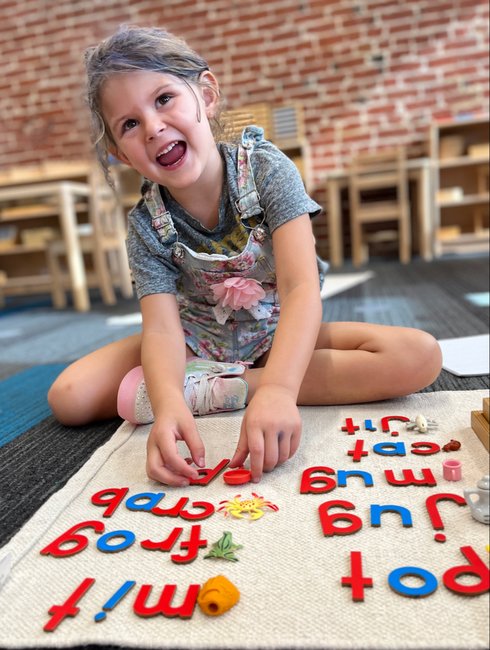
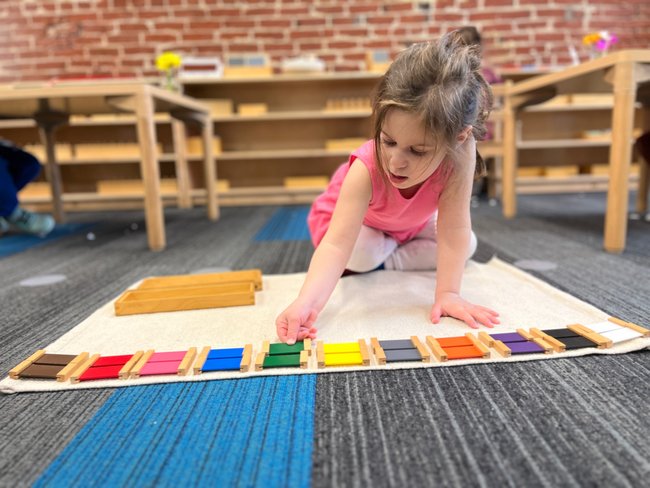
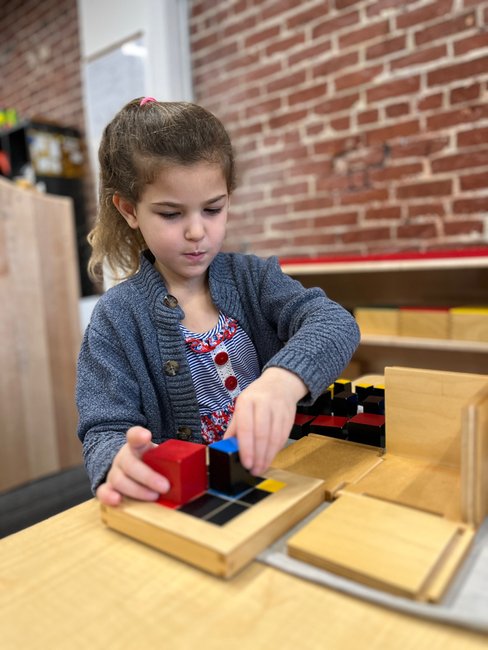

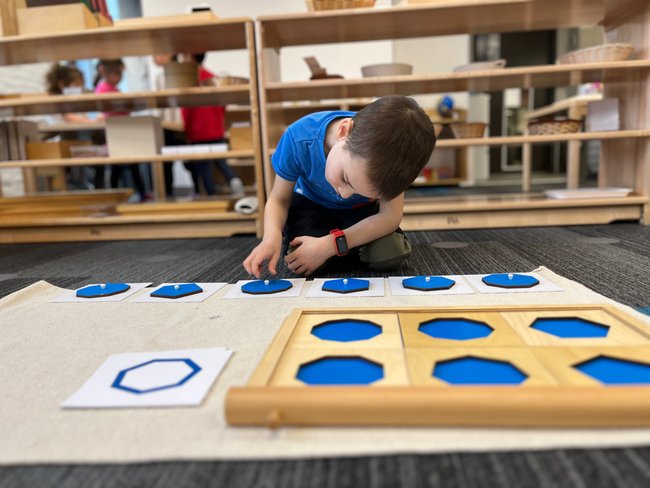

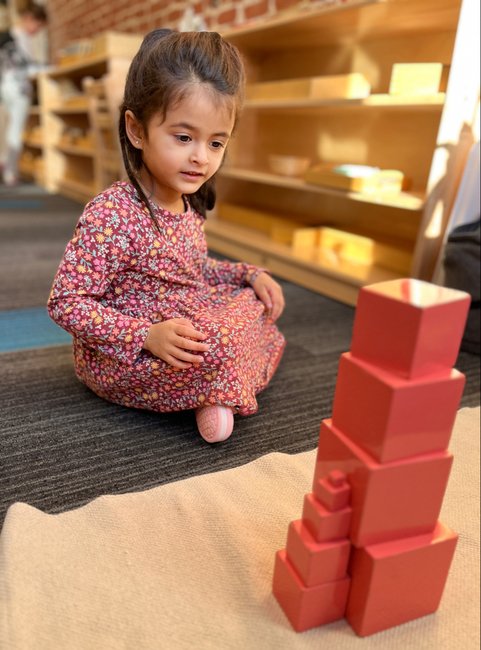


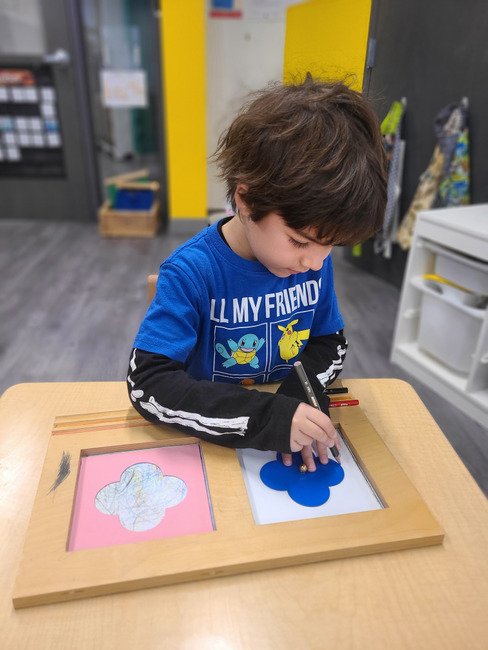

While the teacher will act as a guide offering individual or small group lessons, the learning in a Montessori environment happens when the child chooses their work materials. Montessori materials are carefully structured in a sequence that leads a child toward ever more advanced knowledge. Contrary to a traditional preschool program where children are offered a wide variety of toys to play with in any order, Montessori materials start simple and get progressively more complex.
Learn more about the benefits of a Montessori education by visiting the American Montessori Society.


